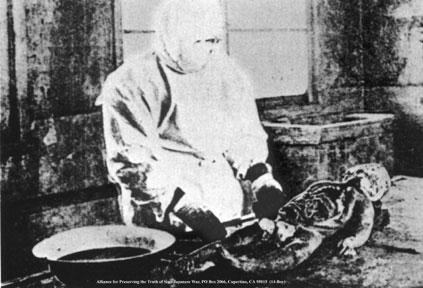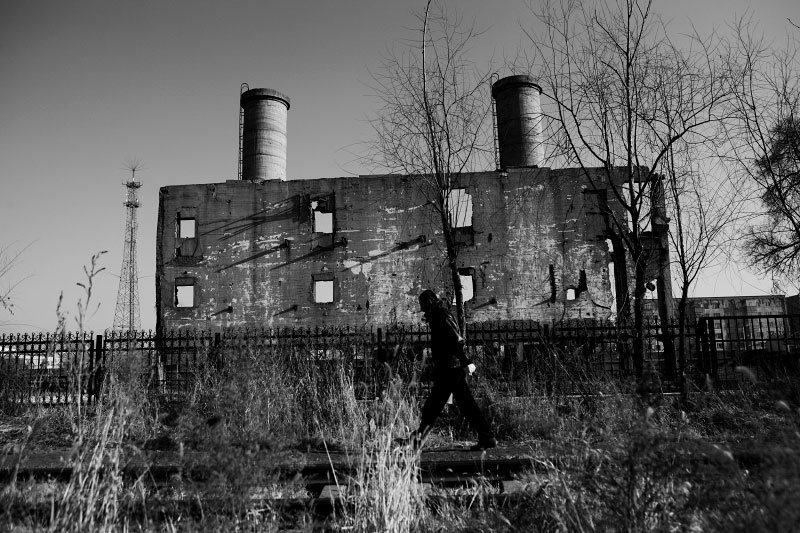Human Experiments
One of the main reasons that ISHII and other Japanese scientists were eager to develop their biological and chemical warfare programs in occupied territories was because, unlike in Japan, they could get away with the illegal use of human subjects for experimentation purposes. Chinese civilians suspected to be communist spies or guerillas, forced laborers, as well as POWs from China, Russia, Korea, South East Asia, the US and other countries were used in horrific experiments similar to those being done on Nazi prisoners in Europe at around same time.
Types of Experiments
The human experiments were performed by Japanese medical students, doctors and researchers at the biological and chemical warfare development sites, such as at Pingfang and other facilities throughout China. The types of experiments included the testing of chemical and biological weapons and medical experiments. To test biological and chemical warfare, prisoners were brought to special testing sites, tied to stakes in the ground, and exposed to biological and chemical weapons. In other cases, they were injected with various types of bacteria to test their immunity, or were given food contaminated with pathogens. Doctors carefully monitored the progress of the diseases and injuries they inflicted, and autopsied all victims. According to many reports and repentant perpetrators, most of the dissections were performed while the victims were alive and with no anesthetic in order to avoid compromising the results. The live vivisections involved removing vital organs, at least one amputation of an arm or a leg, and then a tracheotomy before the victim was finally executed by injection.

on Human Subjects
They also performed a number of medical experiments aimed at furthering research on soldier survival and treatment. They put people in pressure chambers until their eyes popped out and blood was forced through their skin. They denied people food and water to determine maximum survival length. They put people into scalding or ice water to test the human body's ability to withstand severe temperatures. They exposed people's naked limbs to extreme cold to perform frostbite experiments, amputating limbs that were frozen solid and then moving on to other limbs. They also injected women with sexually transmitted diseases and then performed live dissections of their internal organs to research the progression of the infections. These are just a few of the examples of human experiments performed at Pingfang and other research facilities established and run by the Imperial Japanese army.

"Logs"
The doctors and researchers carrying out these horrific experiments were able to do so in part because they psychologically detached from the victims by seeing them as 'logs' rather than humans. 'Log' was the euphemistic term used to refer to the human subjects, and originated from locals being told as a cover story that the Pingfang complex was to become a sawmill. Similarly, in scientific publications about the findings from the experiments, the human subjects were referred to 'monkeys.' Such psychological disassociation of the humanity of the victims was essential for the success of the programs.
Numbers of Victims
Nobody survived the experiments, and bodies were cremated in large incinerators. Although most researchers estimate that there were around 3,000 victims of the human experiments in Pingfang alone and thousands more at other facilities, it is difficult to ascertain exact figures. Each prisoner was assigned a number between 101 and 1,500, and the count would start again after 1500 people. This makes it difficult to trace the exact numbers, even with official records. Sheldon Harris, an expert on Japanese biological warfare during WWII, conservatively estimates that 10,000 to 12,000 people were killed in these lab experiments. (Harris, 2002) But even he admits that until the major archives are open, precise estimates are difficult to ascertain. What we do know is that the human experiments done by the Imperial Japanese Army and its medical research staff exceeded in number and in brutality any similar programs in recorded history.

Impunity for War Crimes
In the aftermath of the war, several of the key orchestrators and perpetrators of these experiments were arrested by US forces. However, they were never held accountable for their crimes, as the US pardoned them in exchange for the research garnered from the experiments. The findings are still part of modern medical literature, and continue to inform military researchers around the world.
